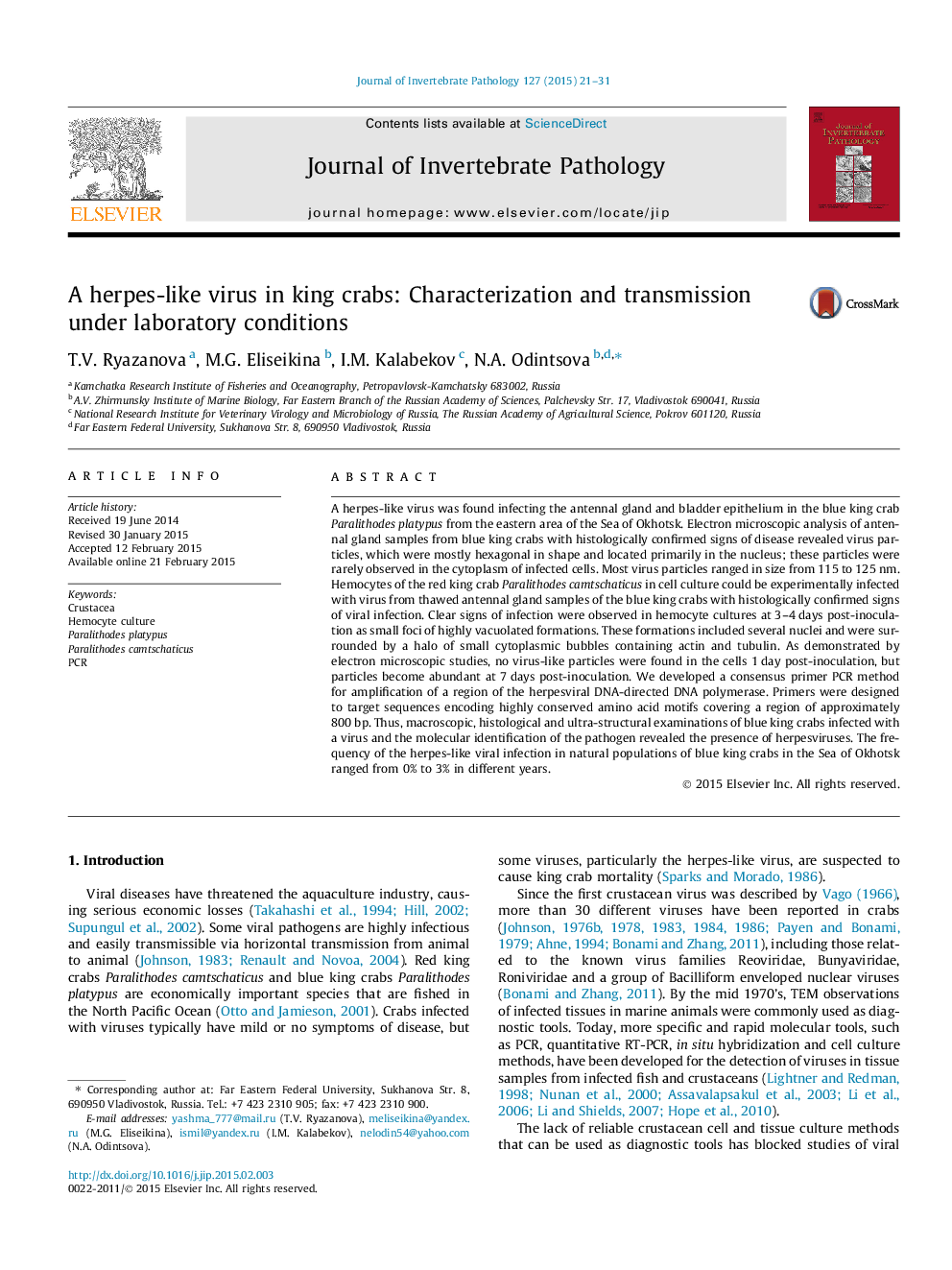| Article ID | Journal | Published Year | Pages | File Type |
|---|---|---|---|---|
| 4557637 | Journal of Invertebrate Pathology | 2015 | 11 Pages |
•Herpes-like virus was detected in the blue king crab population from the Sea of Okhotsk.•The virus particles, hexagonal in shape, are located primarily in the nuclei.•Crab hemocytes in cell culture can be infected with virus filtrates from ill crabs.•The herpes-like virus particles become abundant at 7 days post-inoculation in vitro.•DNA nature of the viral nucleic acid was detected by a consensus primer PCR method.
A herpes-like virus was found infecting the antennal gland and bladder epithelium in the blue king crab Paralithodes platypus from the eastern area of the Sea of Okhotsk. Electron microscopic analysis of antennal gland samples from blue king crabs with histologically confirmed signs of disease revealed virus particles, which were mostly hexagonal in shape and located primarily in the nucleus; these particles were rarely observed in the cytoplasm of infected cells. Most virus particles ranged in size from 115 to 125 nm. Hemocytes of the red king crab Paralithodes camtschaticus in cell culture could be experimentally infected with virus from thawed antennal gland samples of the blue king crabs with histologically confirmed signs of viral infection. Clear signs of infection were observed in hemocyte cultures at 3–4 days post-inoculation as small foci of highly vacuolated formations. These formations included several nuclei and were surrounded by a halo of small cytoplasmic bubbles containing actin and tubulin. As demonstrated by electron microscopic studies, no virus-like particles were found in the cells 1 day post-inoculation, but particles become abundant at 7 days post-inoculation. We developed a consensus primer PCR method for amplification of a region of the herpesviral DNA-directed DNA polymerase. Primers were designed to target sequences encoding highly conserved amino acid motifs covering a region of approximately 800 bp. Thus, macroscopic, histological and ultra-structural examinations of blue king crabs infected with a virus and the molecular identification of the pathogen revealed the presence of herpesviruses. The frequency of the herpes-like viral infection in natural populations of blue king crabs in the Sea of Okhotsk ranged from 0% to 3% in different years.
Graphical abstractFigure optionsDownload full-size imageDownload as PowerPoint slide
